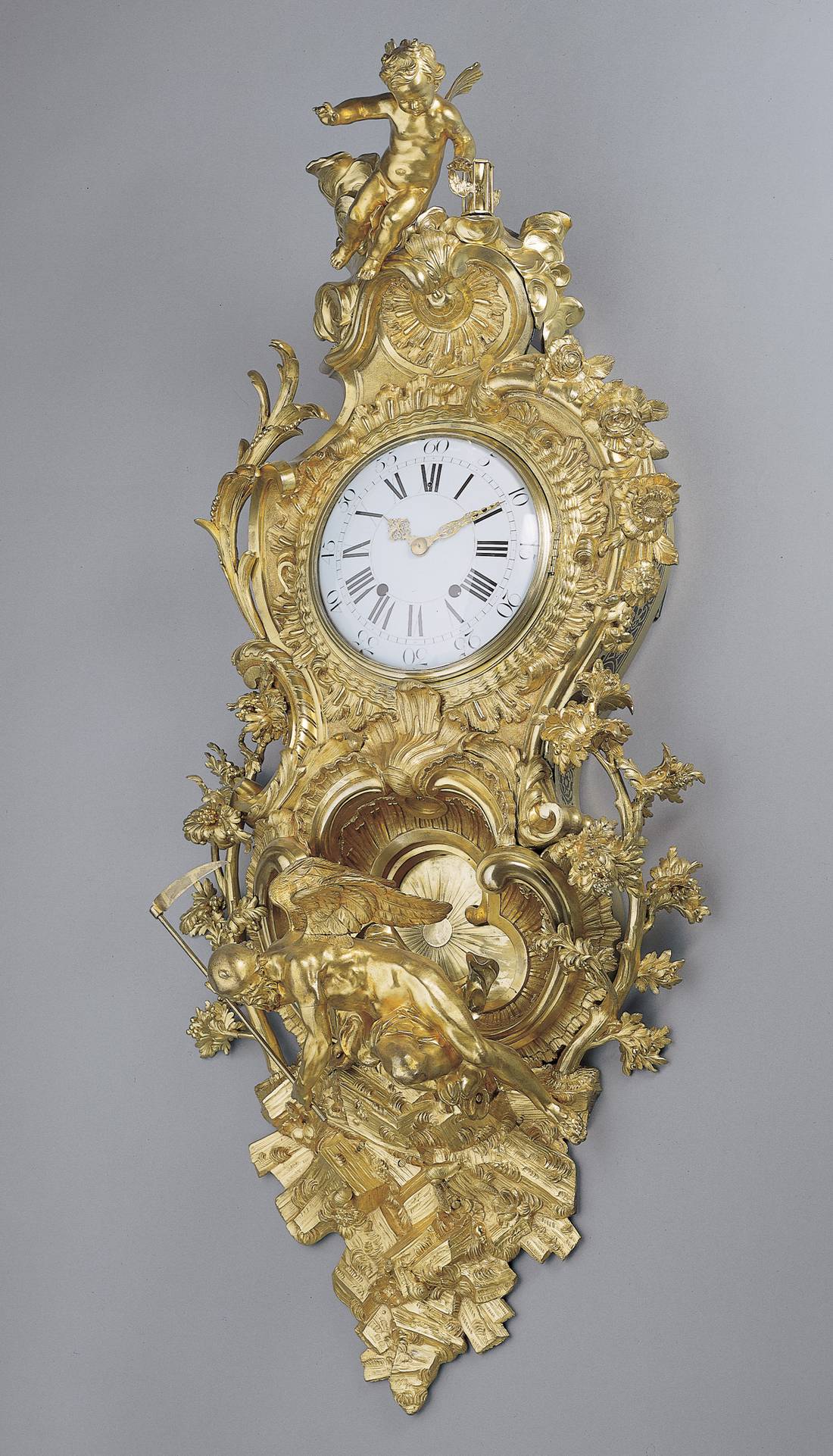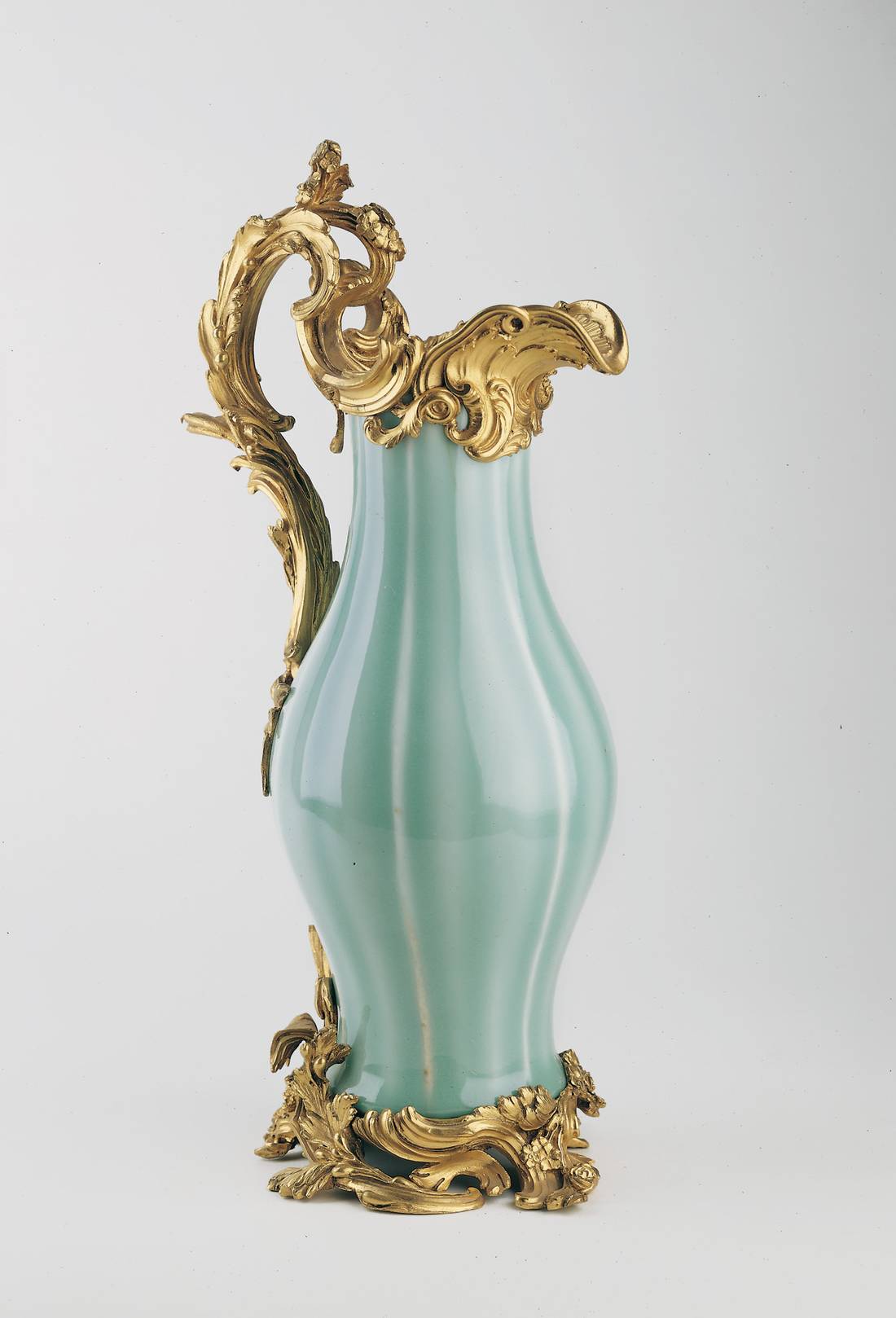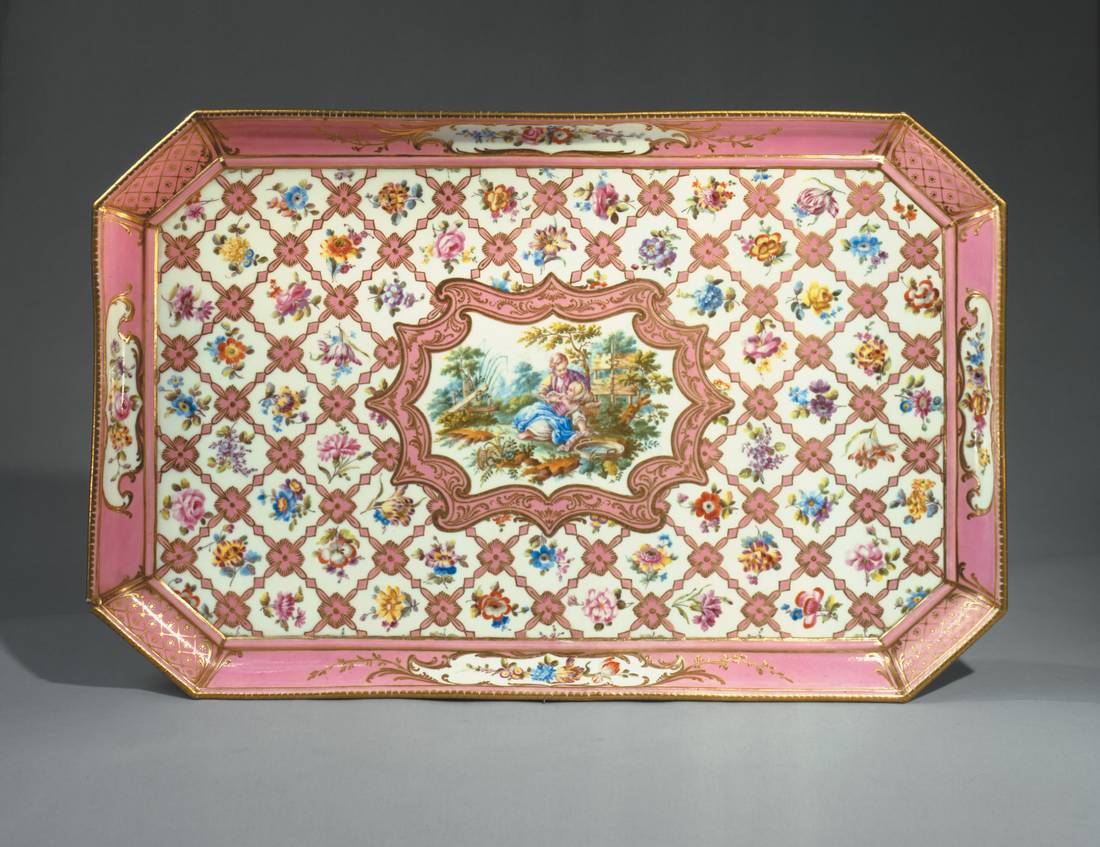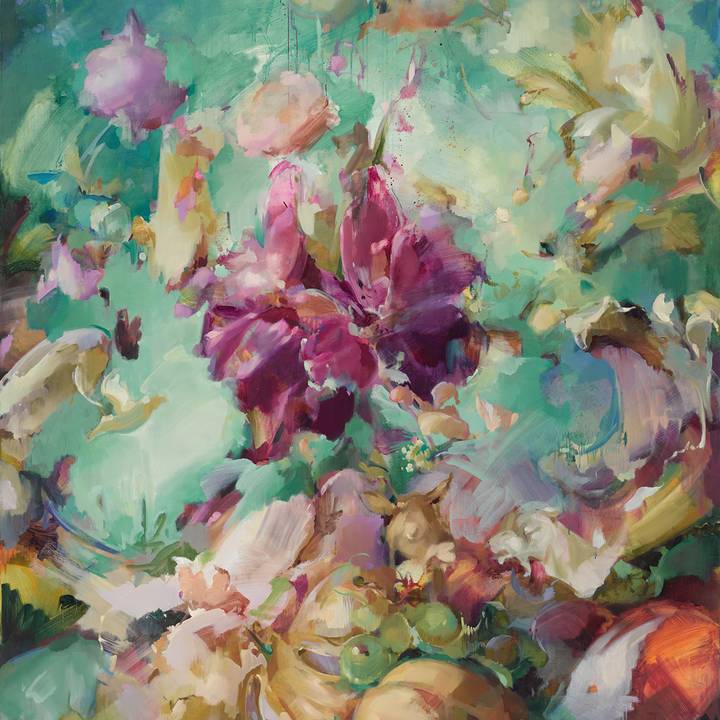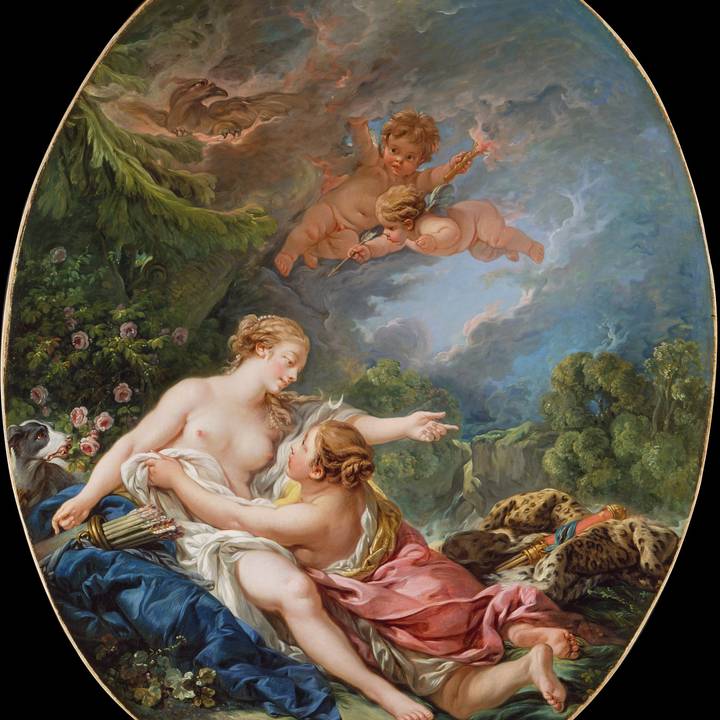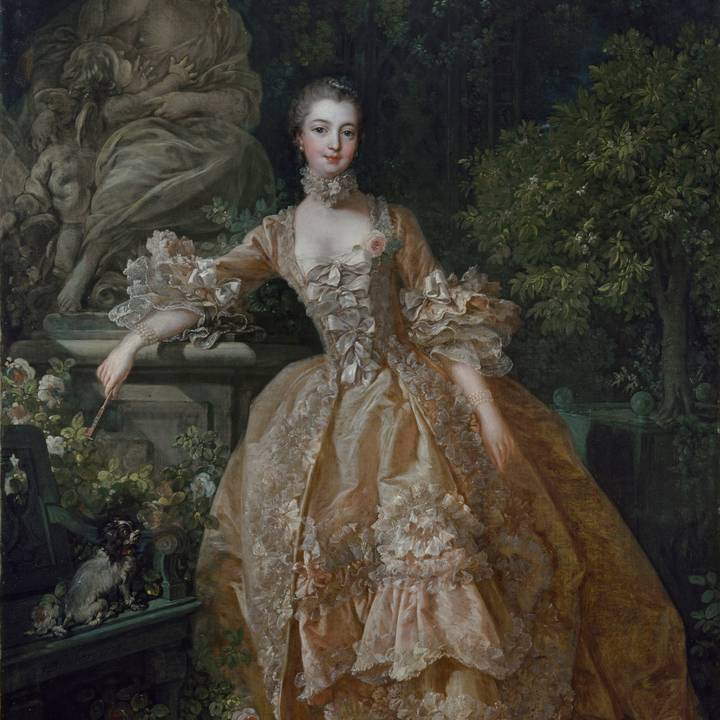Rococo is a word that derives from the French, rocaille, the shell-covered rock work used to decorate artificial grottoes.
First used as a term in the early 1730s to describe anything exaggerated, asymmetrical, unrefined, or irregular, the word became associated with a highly fashionable, luxurious style in the decorative and applied arts at the court of Louis XV in France in the middle years of the 18th century. Rococo was also popular in Italy, southern Germany, Austria and Russia.
At a time when royal and aristocratic interiors were subject to total design, Rococo could touch every aspect of a room from its architecture and plasterwork, to its fixtures, furniture, tapestries, carpets, fabrics, clocks, porcelain and paintings.
A Rococo piece can be recognised by the exuberant and highly creative use of organic, asymmetrical, curving C, G and S forms.
Shells, rocks, clouds and acanthus leaves are often intertwined with wild animals, claws, fish scales, serpentine bodies, human heads and plump cherubs. Rococo designs often delight in piled-up excess, a sense of dynamic transformation and fantasy.
There is also a strong suggestion of ostentatious luxury and rarity – the Rococo piece by its very nature suggests the exclusive on-off – and it was not unusual for precious imported goods, such as highly prized Chinese porcelain or lacquerware, to be given fashionable Rococo mounts on arrival in Europe.
Many Rococo designs are based on a sentimentalised idea of nature and country life. Rustic elements such as garden trellises, basket-work patterns, wildflowers and beribboned shepherds and shepherdesses are often the basis for Rococo forms.
And in painting, tapestry and porcelain, the pastoral, as reinvented by Francois Boucher (1703-1770), focused on characters and settings made popular by theatrical entertainments in Paris that intrigued the wealthy.
Added to these identifying elements, the Rococo object is also often brightly coloured – pink and turquoise being favourite hues – and unapologetically playful, whimsical and frivolous.
The exuberance of the Rococo stood in contrast to the more sober and symmetrical designs favoured by those incorporating classical elements that both came before and after it in France.
By the time of the French Revolution of 1789, in which Classicism was effectively adopted as the state style, Rococo had fallen from favour entirely. Furthermore, it was castigated as a saccharine, feminine and morally bankrupt expression of a reviled, over-privileged, social class. In many ways the Rococo continues to divide critics and public alike today.
Still considered by some as superficial and immoral, others, such as the contemporary British artist Flora Yukhnovich (1990), see it as dynamic, creative and refreshingly utopian – a style of art that invites the viewer to let go, revel in fantasy and enjoy the pleasures of life.
